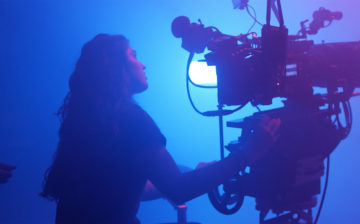Blog
190.180 – CREDIT AWARDING STANDARDS
190.180 – Credit Awarding Standards
Revised: August 2017
POLICY
In assessing work with regard to the awarding of credit, the MFA Committee considers a set of criteria including: time on task; growth in individual art practice; development of creative vision; and capacity for self-evaluation, critical thought and discourse.
PROCEDURE
Candidates are not graded, however the Committee ensures by majority consensus that all of these criteria are met before credit is granted. This is accomplished at a Saturday evening meeting during a retreat; the Committee deliberates and votes as to whether credit should be granted. A Candidate is notified during or shortly after the retreat if their projects have been accepted for credit. On those occasions that the MFA Committee declines credit, the Committee so advises a Candidate and stipulates deficiencies that must be corrected if credit is to be granted at a subsequent retreat. In cases where the project mentor recommends credit be granted but the MFA Committee does not believe credit has been earned, the Committee advises a Candidate if the work should be modified and re-submitted. In the event that a project mentor does not recommend credit but the Committee believes the Candidate has met the criteria for receiving credit, credit is granted. Credits earned will not appear on a Candidate’s transcript until such time as the MFA Office receives all corresponding documentation.
- Time on task: The Candidate must spend a minimum of 45 hours on task, including time spent in discussion with a mentor, to receive one graduate credit. Project planning in conjunction with advising is not considered in determining time on task. A Candidate is not required to keep a record of hours spent on task; the Committee believes it can recognize whether this standard is met, particularly in relation to how well a candidate has met the other criteria for the awarding of credit. The MFA program is designed to allow working individuals, or those with other extracurricular responsibilities, to earn the degree. However, the program is rigorous and demanding. To earn the degree within the allotted period of three years, students must register for between nine and eleven credits per semester. The typical mentored- project load for each semester is nine credits. Students therefore should expect to devote, at minimum, 21 hours per week to their studies. Additional credits may be earned through completing one-week intensives and qualified workshops, in residence at the College.
- Growth in individual art practice: The Committee evaluates the project under consideration for evidence of a Candidate’s progress in refining craft and other elements of facture specifically related to the their art forms. As this is an assessment of progress, it is generally made with consideration given to work a Candidate has previously submitted for critique.
- a. Confidence and Respect for the Creative Process: Each candidate should develop confidence in their abilities, be able to demonstrate respect for their creative process and work, and to evolve as an artist independently without relying on the critical support and feedback of others.
- b. Competency and Technical Excellence: Each candidate should be able to demonstrate technical excellence and superior competency in whatever media they elect to use in the translation of their concepts and intentions.
- c. Responsibility for Personal Goals: Each candidate should take responsibility for their decisions in the pursuit and realization of their ambitions in making art, in the business of art, or in art education.
- Development of creative vision: Whether the project under consideration is of a studio or an academic nature, the Committee requires that it contribute to the overall artistic maturation of the Candidate. Therefore, the project must be deemed not only relevant in this regard but of a quality exemplary of graduate-level work.
- a. Ability to meet Challenges: Each candidate should possess the skills, confidence, and ability to generate and develop ideas in the interest of furthering their creative vision, to meet challenges, to address problems intelligently, to solve problems creatively, to accept and embrace risk in order to evolve as an artist.
- b. Adaptation of New Technology to Achieve Personal Vision: Each candidate should develop and nurture a curiosity for new technologies and the ability to adapt them in their personal vision without compromising that vision.
- c. Consistency and Focus: Each candidate should be able to demonstrate that projects undertaken for studio or academic graduate credit are integral to the advancement of a unique creative vision.
- Capacity for self-evaluation, critical thought and discourse: The Committee makes such judgments based on a Candidate’s participation in critiques of work, reviews of their academic papers, and the appraisals of their own efforts as described in project evaluations they must complete and submit to the Committee.
- a. Intentions, Concepts, Context and Syntax: Each candidate should be able to demonstrate superior oral and written abilities in the discussion of their work. This continuously practiced dialogue should adequately communicate the intentions, concepts, context and syntax employed in that work.
- b. Historical, Social and Cultural Context: Each candidate should be able to identify relevant contexts for their work and to demonstrate superior oral and written abilities when discussing where they perceive their work currently fits within these contexts.
- c. Relationship of Art History and Other Disciplines to the Medium: Each candidate should be able to demonstrate superior oral and written abilities in the discussion of the history of art, the humanities, and other disciplines as they impact visual culture, and make connections that establish relationships to their chosen practice.




